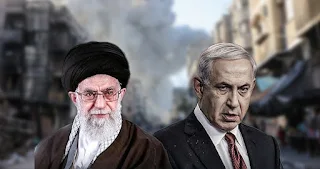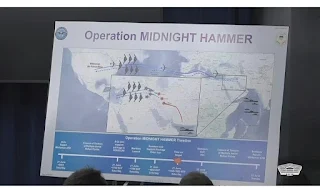
On June 23, 2025, the political landscape of Gujarat witnessed a seismic shift as Aam Aadmi Party (AAP) leader Gopal Italia secured a resounding victory in the Visavadar Assembly by-election, defeating Bharatiya Janata Party (BJP) candidate Kirit Patel by an impressive margin of 17,554 votes. This triumph, in a constituency long considered a battleground in the Saurashtra region, marks a significant milestone for AAP's growing influence in Gujarat and poses critical questions for the BJP-led state government, which has dominated the state's politics for nearly three decades. Italia's win not only reasserts AAP's foothold in a seat it previously held but also signals a potential realignment of voter sentiment, with far-reaching repercussions for the ruling BJP as it gears up for the 2027 Gujarat Assembly elections.
The Victory: A Triumph of Grassroots Politics
The Visavadar by-election, necessitated by the resignation of AAP MLA Bhupendra Bhayani in December 2023—who subsequently joined the BJP—was a high-stakes contest. The seat, located in Junagadh district, has a strong agrarian voter base and a history of swinging between Congress and BJP, with AAP making inroads in 2022. This time, it was Gopal Italia, a firebrand leader and former Gujarat AAP president, who emerged as the frontrunner. Polling 75,942 votes against Patel's 58,388, Italia maintained a steady lead throughout the counting process, underscoring his deep connection with the electorate. The Congress candidate, Nitin Ranpariya, trailed far behind with a mere 5,501 votes, reflecting the party's diminishing relevance in Gujarat's evolving political arena.
Italia's victory is a testament to his grassroots appeal and AAP's strategic campaign. Known for his outspoken criticism of the BJP and his advocacy for farmers, youth, and the marginalized, Italia resonated with voters frustrated by issues like unemployment, education, and corruption. His campaign, backed by AAP's national leadership, including Arvind Kejriwal and Manish Sisodia, emphasized "kaam ki rajneeti" (politics of work) and promises of systemic change. Speaking after his win, Italia declared, "This victory belongs to the people of Visavadar. This is just the beginning." His words echoed the sentiment of a region yearning for an alternative to the BJP's long-standing dominance.
AAP's national convener, Arvind Kejriwal, celebrated the win as a sign of Gujarat's growing disillusionment with the BJP and Congress. In a post on X, he wrote, "The people of Gujarat are now fed up with the BJP and are seeing hope in the Aam Aadmi Party." AAP's Gujarat president, Isudan Gadhvi, went further, boldly predicting, "If there is anyone who can defeat the BJP, it is AAP… A foundation has been laid today for 2027." The victory, coupled with AAP's retention of the Ludhiana West seat in Punjab, has invigorated the party's cadre and bolstered its narrative as a credible opposition force.
The Context: A Shifting Political Landscape
Visavadar's significance lies in its history and demographics. Once a BJP stronghold under former Chief Minister Keshubhai Patel, the constituency has not elected a BJP candidate since 2007. The 2015 Patidar agitation, which shook the BJP's grip on Saurashtra, opened the door for opposition parties, with Congress winning the seat before AAP claimed it in 2022. Bhayani's defection to the BJP was seen as a strategic move by the ruling party to reclaim the seat, but Italia's victory has turned the tables, exposing vulnerabilities in the BJP's seemingly impregnable fortress.
The by-election saw a voter turnout of 56.89%, with rural voters playing a decisive role. Political analysts attribute AAP's success to its focus on local issues—unemployment, agrarian distress, and inadequate education infrastructure—combined with Italia's personal appeal as a Patidar leader who has consistently challenged the BJP's governance. AAP's promise of free education, healthcare reforms, and anti-corruption measures struck a chord with youth and farmers, demographics increasingly disenchanted with the BJP's development narrative.
Repercussions for the BJP-Led Gujarat Government
The BJP, which holds 162 seats in the 182-member Gujarat Assembly, remains the dominant force in the state. However, Italia's victory in Visavadar is a rare setback that could have broader implications for its political strategy and public perception. Here are the key repercussions:
Erosion of Invincibility Narrative: The BJP has ruled Gujarat uninterrupted since 1995, projecting an image of electoral invincibility. Italia's win, in a region where the BJP has struggled for nearly two decades, dents this narrative. It suggests that even in Prime Minister Narendra Modi's home state, voter loyalty is not guaranteed, especially in rural areas grappling with economic challenges.
Saurashtra's Restlessness: Saurashtra, with its significant Patidar and agrarian population, has been a volatile region for the BJP since the 2015 Patidar agitation. Visavadar's result indicates that AAP is capitalizing on lingering discontent, positioning itself as a viable alternative. The BJP's failure to win the seat despite fielding a local candidate and leveraging its organizational might raises questions about its grassroots connect in the region.
Defection Strategy Backfires: Bhayani's defection was part of the BJP's broader strategy to weaken opposition parties by absorbing their leaders. However, AAP's ability to reclaim the seat with a stronger margin—17,554 votes compared to Bhayani's 7,063 in 2022—suggests that this tactic may not always yield dividends. Gadhvi's pointed remark, "The BJP poached one leader of AAP, but the leaders of the party got the seat back," underscores the BJP's miscalculation.
Pressure to Introspect: BJP leaders have acknowledged the need for introspection. While the party dismissed the loss as a result of "local factors," senior leaders have vowed to recalibrate their approach in Saurashtra. The defeat could prompt the BJP to reassess its candidate selection, campaign strategies, and outreach to rural voters, especially as AAP intensifies its focus on these constituencies.
Boost for Opposition Morale: Italia's win has galvanized AAP and indirectly emboldened other opposition parties. While Congress remains a distant player in Gujarat, AAP's success could inspire a broader anti-BJP coalition in the future. The party's internal surveys, which previously claimed it could win 58 seats in Gujarat, may gain credibility, forcing the BJP to take AAP's 2027 ambitions seriously.
AAP's Road Ahead: Opportunities and Challenges
For AAP, Visavadar is a breakthrough that strengthens its foothold in Saurashtra and enhances its credibility as a third force in Gujarat. Italia, now an MLA, is poised to become a vocal advocate for the state's marginalized communities, amplifying AAP's agenda in the Assembly. His leadership, combined with Gadhvi's organizational skills and Kejriwal's national appeal, could make AAP a formidable contender in 2027.
However, challenges remain. AAP's organizational structure in Gujarat is still nascent compared to the BJP's well-oiled machinery. The party must sustain its momentum, expand its rural outreach, and navigate potential defections—a recurring issue, as seen with Bhayani. Additionally, AAP's reliance on Patidar and youth voters must be complemented by broader caste and community alliances to challenge the BJP's diverse voter base.
Conclusion: A New Chapter in Gujarat Politics
Gopal Italia's victory in Visavadar is more than a by-election win; it is a symbol of AAP's growing ambition and Gujarat's shifting political currents. For the BJP, it is a reminder that even in its stronghold, complacency can be costly. As AAP celebrates its "Arvind Kejriwal-style comeback," the BJP faces the task of addressing voter discontent and fortifying its defenses ahead of 2027. With Italia's voice now echoing in the Gujarat Assembly, the state's politics is entering a new, more competitive phase—one where the BJP's dominance is no longer unquestioned, and AAP's promise of change is finding takers.









